Mums—those pretty, mounding flowers that come in all the best fall colors—are our go-to for fall garden and porch décor. But most of us are not getting nearly what we could or should out of our yearly investments.
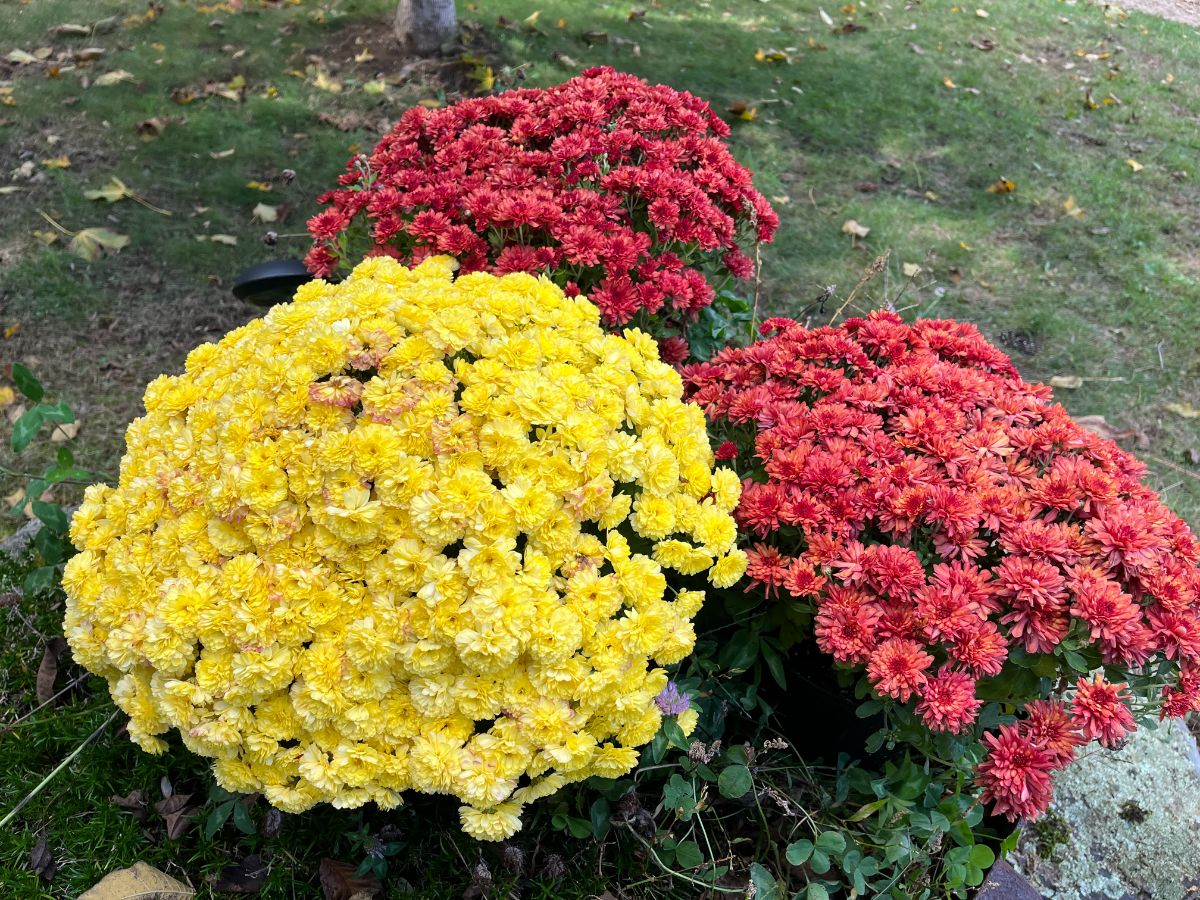
We tend to treat mums (chrysanthemums, really, if we’re using their full name) like annuals. Each fall around September, we buy our annual allotment, bring them home, and use them to create those seasonal fall vibes, all while enjoying one of the last flowering plants that are hardy enough to withstand the shorter days and dropping fall temperatures.
When the first frost comes calling, we cover them or bring them inside until we just can’t protect them from the harder fall freezes. Then they die back, and we throw them out; or, if we’re really good, we relegate them to the compost pile.
The thing is, mums are not annuals! Mums are actually perennials. This means, with the right care, they can be overwintered and grown as perennials, which will come back next year.
Jump to:
Two Types of Perennial Mums
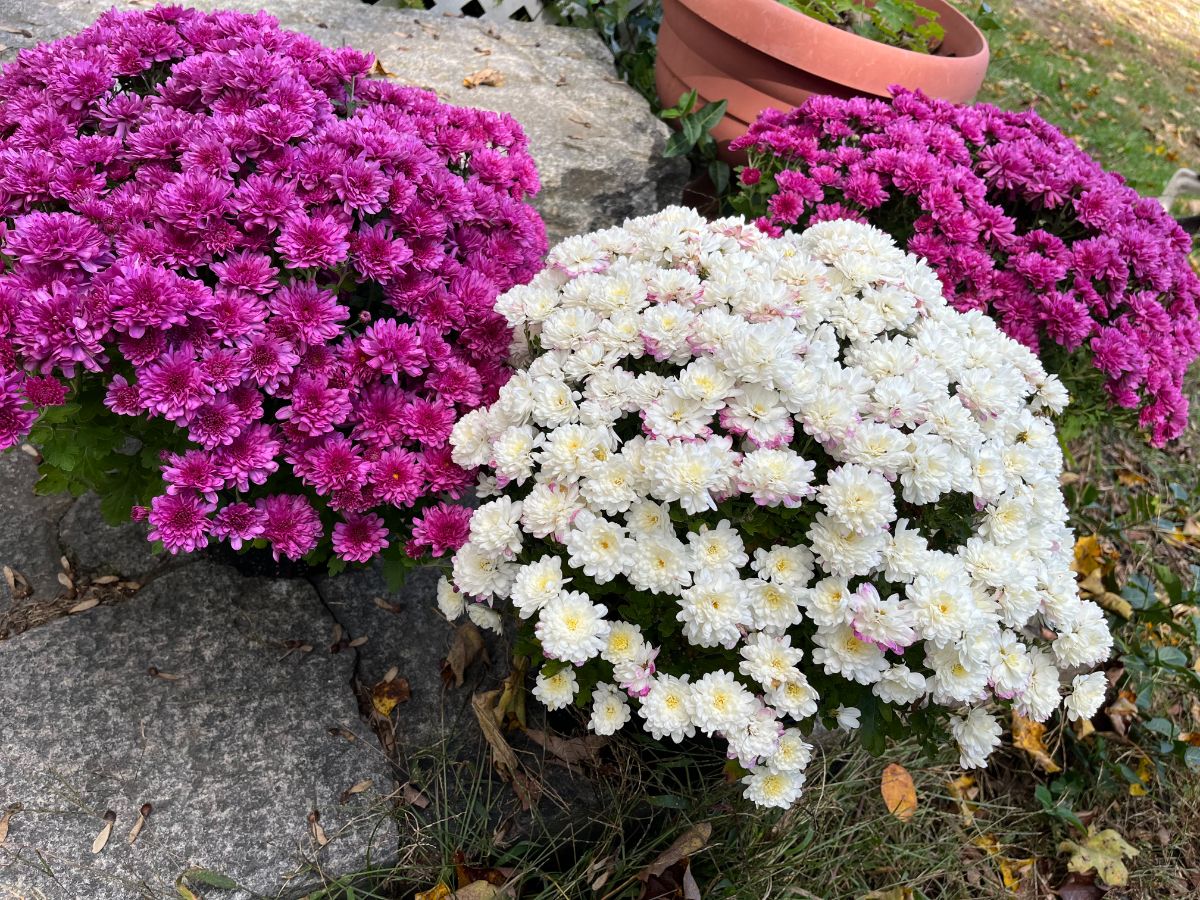
The mums we are all most familiar with are the mums we buy at grocery stores, nurseries, and garden centers in the fall. Those in florist shops or the florist shop of a grocery store are technically perennials, but only in the warmest of climates (like only in climates 7 through 9 on the USDA scale or places with similar climates). These are usually smaller and packed in gift pots. They may also be used for floral arrangements.
The larger potted mums that we buy at garden centers, from growers and the like are more likely to be hardy mums. These are—or can be—perennials in most locations. They are fully capable of being grown as perennials in zones four through nine and their equivalents.
You can try to follow the instructions listed here to overwinter florist mums but don’t be surprised if it doesn’t work. For those, the indoor dormant instructions are probably your best bet. But since these mums are usually treated like annuals anyway, and since you already own them and spent money on them, why not give it a try? You don’t have any more to lose than the money you’ve already spent.
Now on the other hand, if you have not bought your mums yet, this is a good reason to choose hardy mums instead.
If you’re not sure which you have, see if the pot is labeled. If it’s not, you can go online to compare or try using a good plant ID app to see what you might have.
To give you a couple of clues, perennial hardy mums have broader leaves that have deep notches in them. Florist mums have narrow leaves and not-so-deep or obvious notching.
If you do have a tag, chrysanthemum morifolium are the hardy perennial type, and chrystanthemum multicaule are the mostly annual (except in warm places) florist type.
How to Overwinter Hardy Mums in the Ground
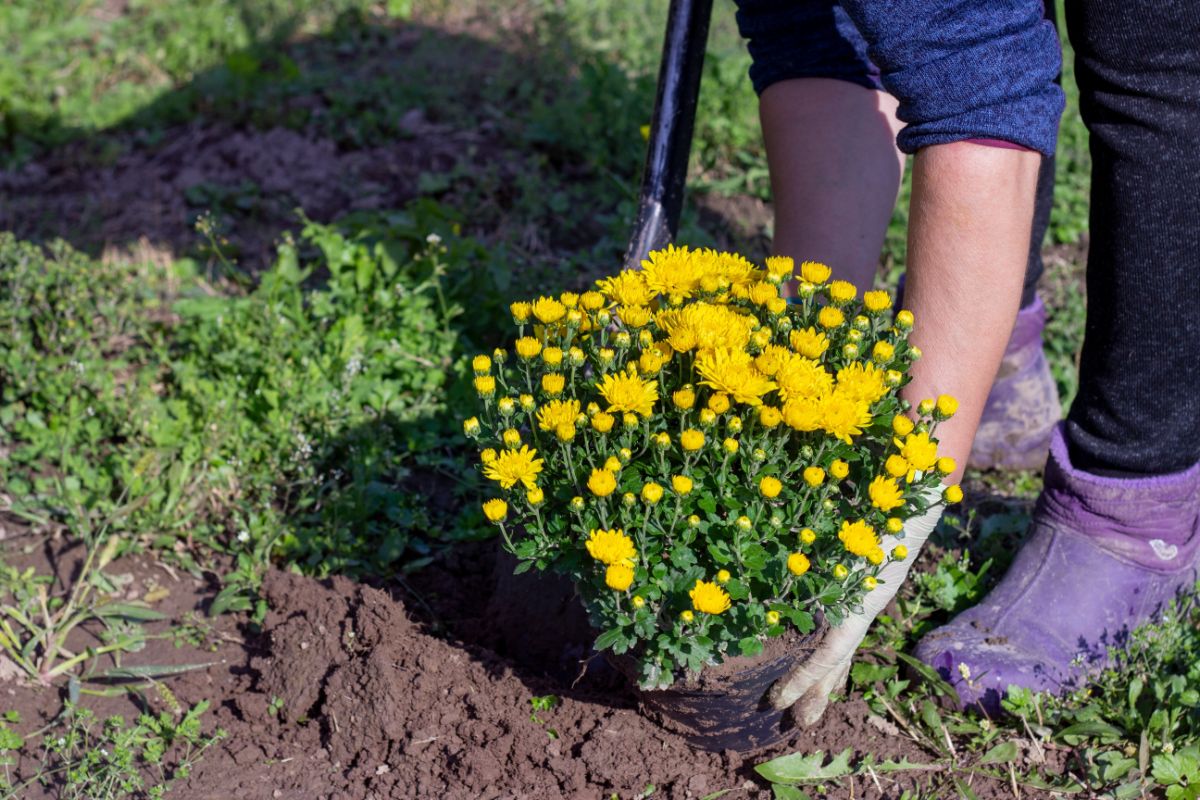
Hardy mums that are planted early may overwinter in the ground. Given the time of year that they are available to buy, this may be a gamble (see the chat below in the “Key to overwintering mums in the ground” section).
Here’s how to do it:
- Plant mums in the ground as early as possible in the fall. Ideally, you want six to eight weeks with your mums in the ground before the ground freezes. This allows them to grow a good, branching root system, which is what they’ll need to survive the winter. If you can get them earlier and plant them earlier, that’s even better.
- Choose a spot with good, well-draining soil. This is important. Water pooling and staying in the ground around your mums in the winter will freeze and kill the roots (and in the warm growing months, they won’t like it, either).
- The location should get full sun in the growing months for 6 to 8 hours per day. Soil needs to be good and rich with nutrients, as mums are heavy feeders. You will need to add compost or fertilizer in future growing seasons.
- It can be helpful to add some compost to the soil when you plant your mums to improve the drainage (and give them something to feed on now and in the spring).
- Don’t crowd your plants—give them some room to breathe so fungal diseases and downy mildew are less likely to set in. Space them 12 or more inches apart. Keep in mind that in the future, since we’re treating these perennials like perennials, they will grow and spread, so they’ll fill that space over time. When your perennial mums get too big and too crowded, divide them to space them out and keep good air circulation.
- Plant your mums so that the soil line in the container is set at about (and maybe slightly below) the soil, but don’t plant with soil covering the plant growth.
- Mulch the plants when you plant them. Give them two or three inches of good mulch. This is for moisture conservation (mums need to be consistently moist but drained) and for root protection over winter (though they’ll need more later).
- Now that they’re in the ground, you can keep your mums alive and blooming the longest if you cover them at night during the first few frosts until you start to get serious freezes. A fleece, old sheet, or frost blanket is best and much better than cold plastic.
- Mums should not dry out, so if you’re not getting weekly rain, water your mums regularly so they get adequate water.
- When the mums die back after a frost and freeze, do not trim the dead plant parts. Leave them there to help protect the crown for the winter. You can cut it back in the spring after a thaw.
- When the plant is dormant, pile more mulch around the plant and over the roots, and this time, you can pile some up the stems of the dormant plant. Add another two inches of mulch. Leaf litter, compost, and organic mulches like that are good because they will break down over the winter and feed the soil, which your heavy-feeding, hungry mums will appreciate in the spring and summer.
- In the spring, pull back the excess mulch and work it around the plant but where it won’t pile up against the growing plant stems. Trim back dead stems from the fall before after you see new growth.
And that’s it! Pretty easy, really, and you can enjoy your mums year after year.
The key to overwintering mums in the ground
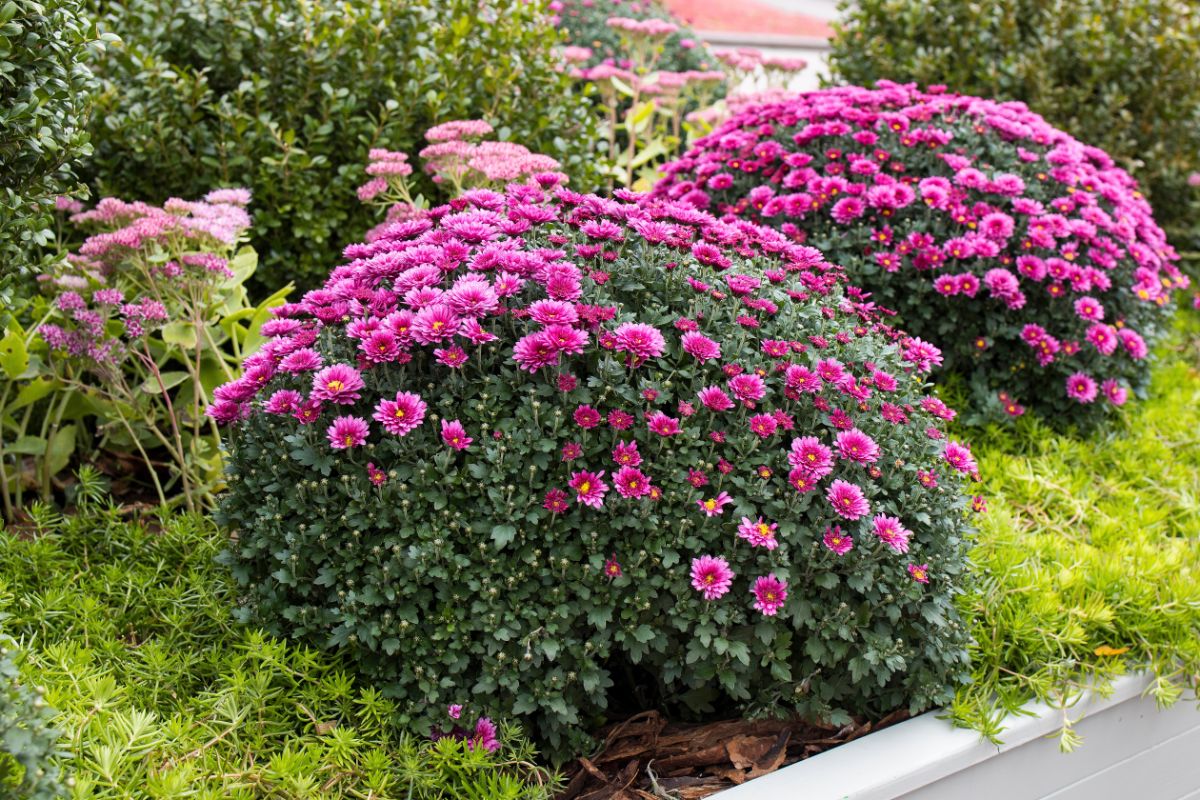
The one key to having your mums survive the winter in the ground is to get them in the ground early. Six to eight weeks is usually the minimum amount of time the mums need in the ground while they are still in a growing phase so they can set out good roots that are able to survive winter’s cold.
If you can buy your mums earlier and get them in the ground earlier, even better—but we know that depends on when sellers start selling them, which isn’t always in line with this timing. The longer your mums are in the ground during the growing season, the higher their chance of survival. So, for in-ground planting, earlier is better.
Without this amount of time (six to eight+ weeks), you might get lucky, and your mums might survive, but it’s definitely more of a gamble.
Ideally, this would be six to eight weeks before your first frost so the plants continue to grow and set roots. You’re likely to get frosts long before your ground actually freezes. If you can plan to beat the frost by six weeks, do that. If you can’t, cover up those mums so they survive through those first fall frosts and keep growing, which will buy you a little more time to grow roots.
If you don’t have at least six weeks before your ground freezes, you should consider overwintering your dormant mums inside and then planting them out in the spring. If you do this successfully, they will almost certainly survive and become long-term perennials that will grow in your garden for many years.
How to Overwinter Mums in Pots
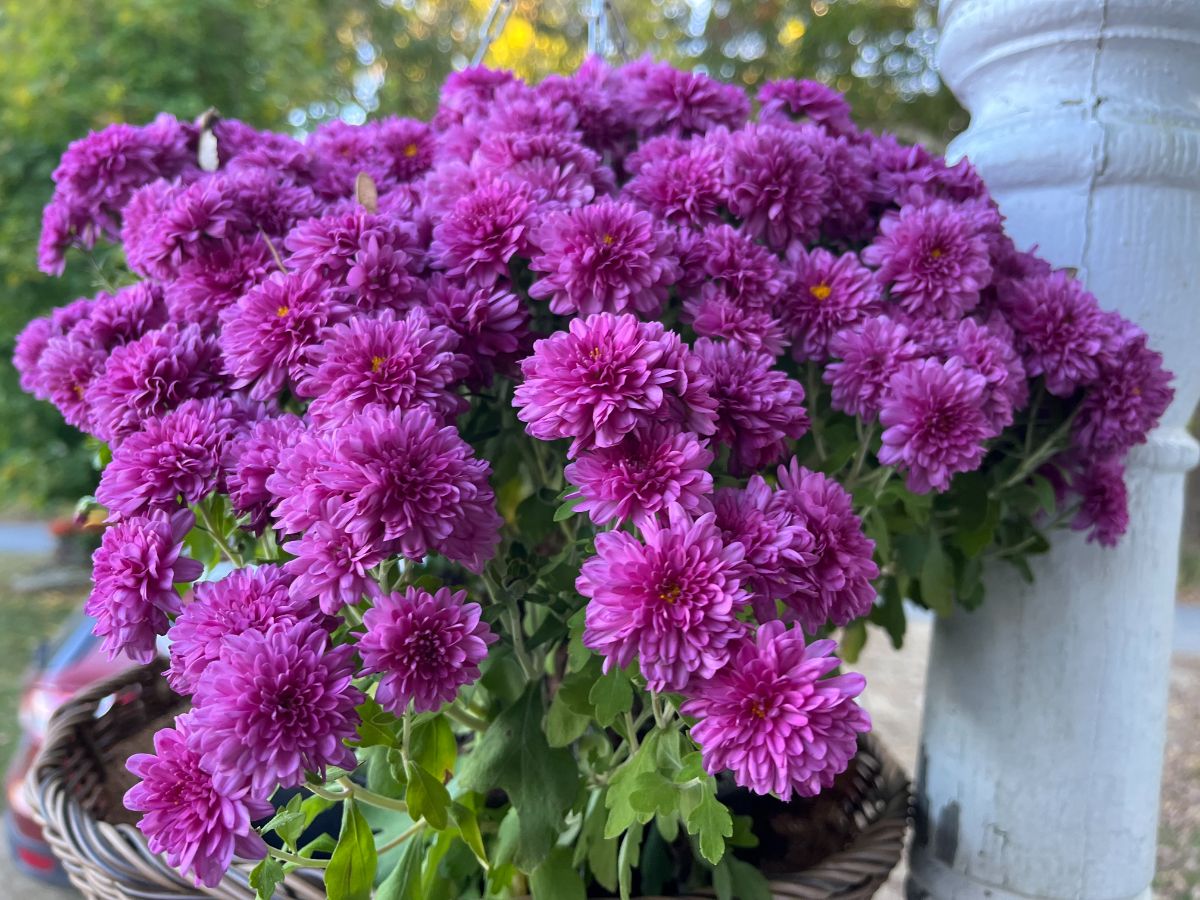
If you plan only to keep mums in pots or containers (or maybe you have no in-ground space to plant them permanently), you can still overwinter your mums and have them come back in the spring. You just have to do it inside.
This is also the better choice if you were not able to plant your mums in the ground with that six to eight+ week window before freezing. If you just ran out of runway on that, overwinter your potted perennial mums indoors and plant them out in the spring.
If you planted your mums in the ground and now it’s looking like you won’t get those six or more weeks, dig them up, repot them, and bring them inside to overwinter.
Here’s how to overwinter potted and container mums inside (by the way, you can and should try this even with the more fragile florist mums!):
- You can wait until after a frost when the plants are dying back and dormant from the frost kill, but you should bring your potted mums indoors to overwinter before a hard freeze. In other words, before it freezes so hard that the soil and roots in the pot freeze solid. If you weren’t expecting a freeze and this happens, try anyway, but if you’re planning to give your plants the best chance, move them indoors before they get completely frozen.
- It’s fine for the top stems and foliage and flowers to get frosted enough to die back. That’s just a natural state of dormancy, which is what you want for them to sleep inside for the winter.
- After the flowers and foliage begin to die, when you’re ready to stop covering them and fussing about them outside, clip off the flower buds. That will let the plant store up any remaining energy for the roots and will also keep dying, dropping flowers and buds from making a mess indoors.
- Do not cut the stems back! Just the flowers, and no lower on the plant than just below the flowers.
- Water all potted mums you’re bringing in. Let the soil become completely wetted all the way through. Let excess water drain out. The goal here is thoroughly moist but not wet, soggy, or dripping.
- Now, bring the moistened mums inside. They should be kept in a dark, cool place.
- The best winter home for dormant mums is in an unheated garage or basement that will stay between 32 F and 50 F (0 to 10 C). This can even be in a cold, dark closet somewhere in your main house or apartment.
- Check your mums weekly to make sure the soil hasn’t dried out. Keep the soil moist. Not wet, but do not let the soil dry all the way out, either. Check weekly, but only water when there is little moisture in the soil. In winter, while in dormancy, the plant won’t be using much water but will die if it is kept dry. Dry air is just as much a culprit of drying out as plant usage is.
- Bring overwintered potted mums back outside after the danger of hard freezes has passed (some remaining frosts should not bother them).
- Try to acclimate your plants back to bright light again after their time spent in the dark for the winter. Do this by moving them to a space with indirect light, then into brighter light for half the day, then increase to direct light, and then outdoors and into full light.
Bringing overwintered potted mums out of dormancy
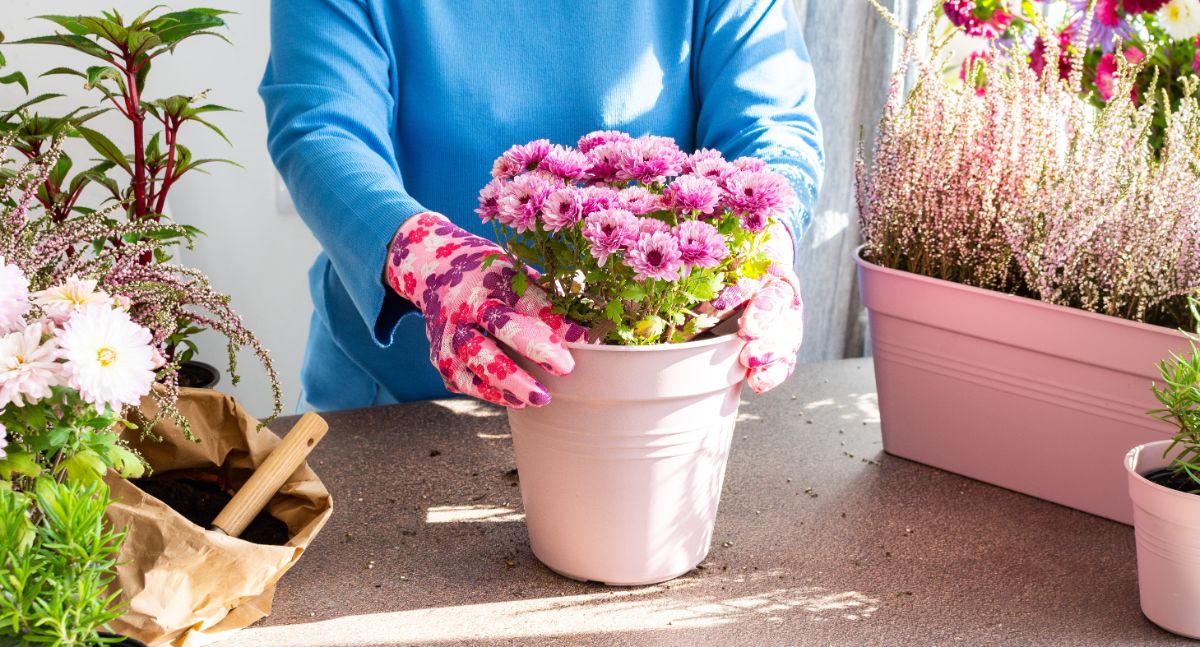
Now that you have successfully overwintered your mums and you’ve acclimated them to living back outside, you can use them however you wish.
- If you want potted or container mums, pot them up into your fall pots now, or you can keep them in their nursery pots and pot them into seasonal planters later (but it’s often easier to do this before the major growth and flowering so you don’t break the plants).
- If you want to plant them permanently in your garden, you can plant the dormant mums when the soil is thawed, drained, and workable. If you expect some frost, that’s okay, but don’t plant your mums out if you think you still have hard freezes coming that will freeze the soil.
- Cut back the old, dead stems after you see new growth appear. Then let your mum grow for the spring and summer—and every year after that, now that they’re in the ground with plenty of time to establish before winter.
- Don’t expect flowers on your mums until fall, regardless of where and how you plant them—fall is the natural bloom time for perennial mums.
- If you only ever want to keep your mums in containers or pots, repeat this dormant indoor overwintering every year. The plants may outgrow their pots and need to be divided some years, though.
And just think—you'll never have to buy new mums or waste money treating them like perennials again!
It’s Definitely Worth a Try to Overwinter Your Mums
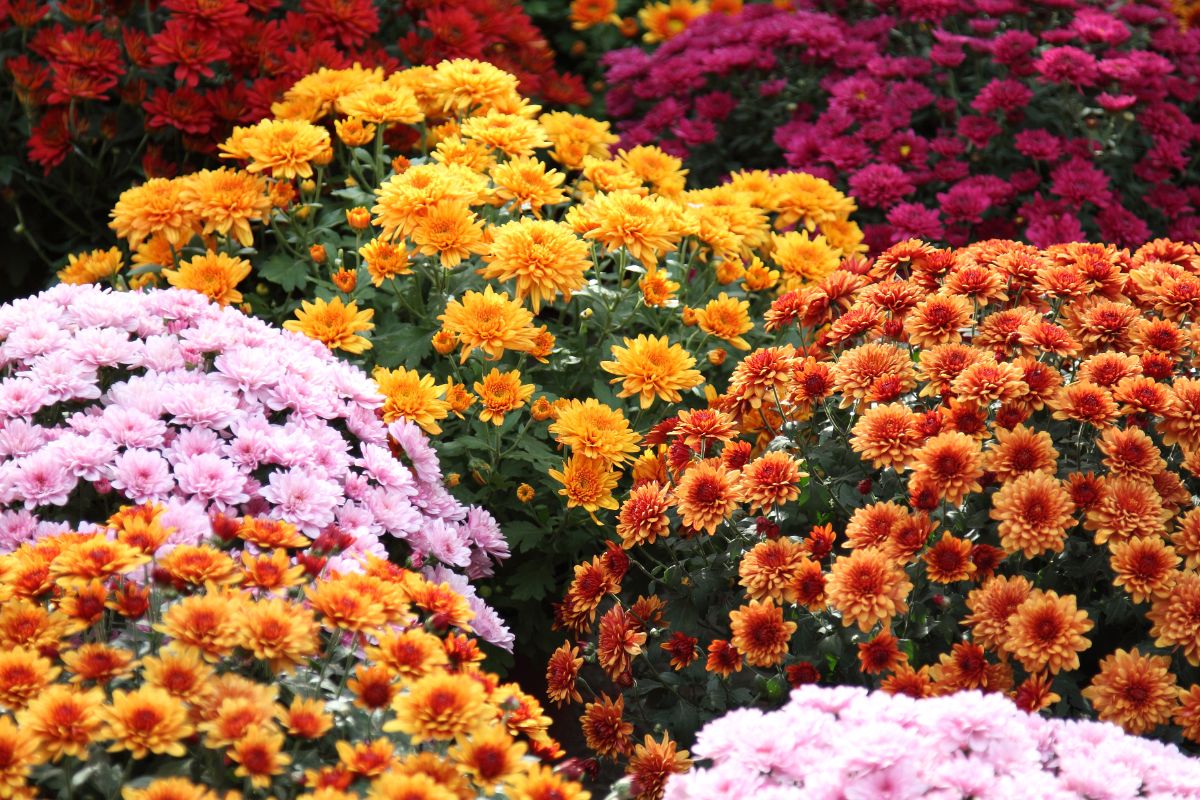
If you’re skeptical about whether overwintering your mums will work, about whether you have a cool enough space, or whether you have time enough left to overwinter them in the ground, just give it a try!
Most of us have pretty much only ever kept mums as annuals anyway, so there’s nothing to lose by trying to overwinter your mums—indoors or out. This is true if you have hardy perennials or the less hardy florist mums. There’s just nothing to lose by a little effort trying. But just think about all those happy, hardy mums we could be saving!


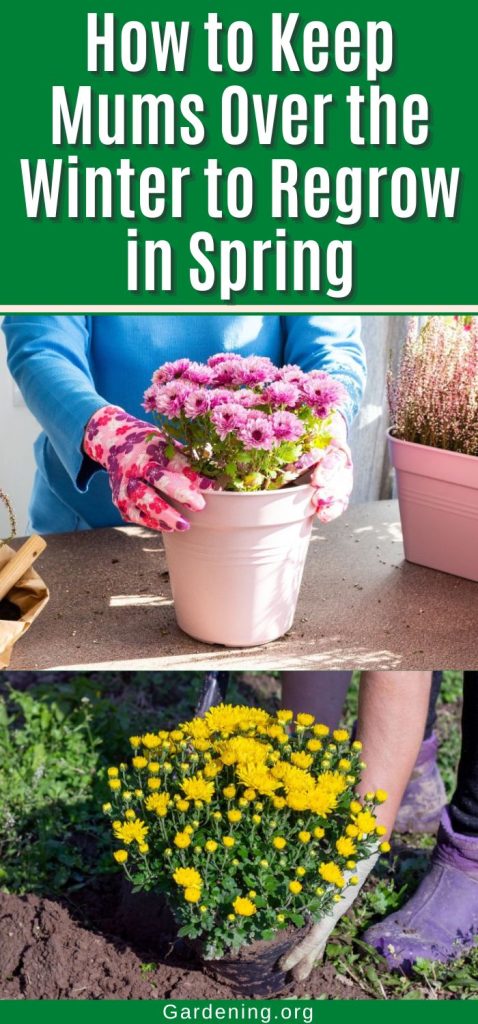
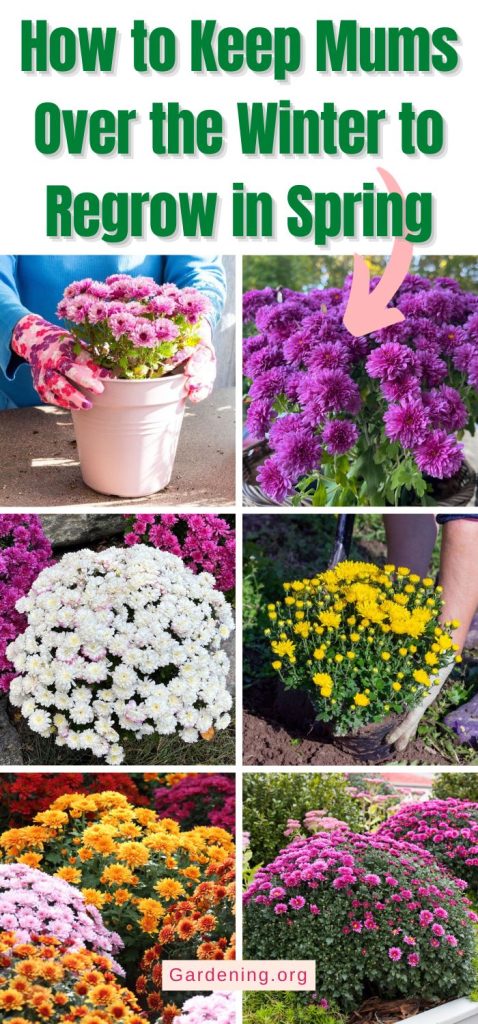
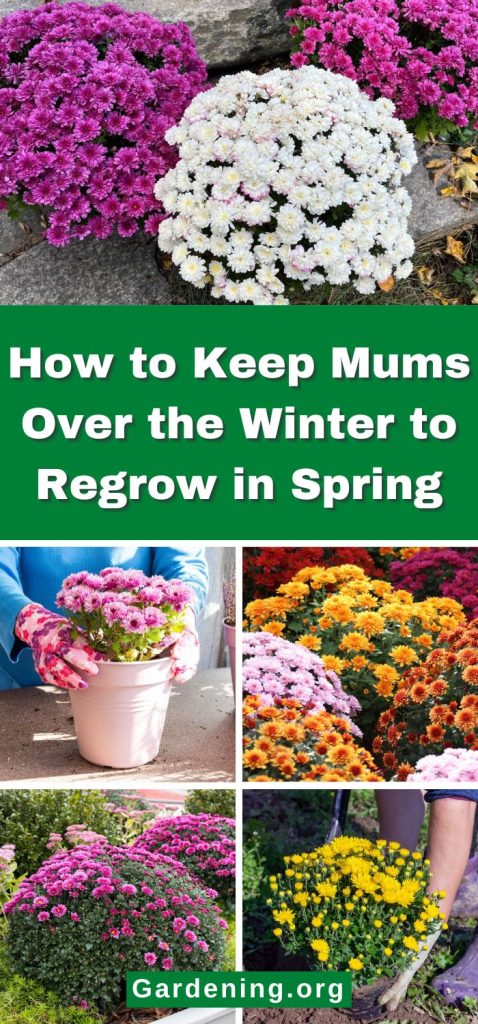

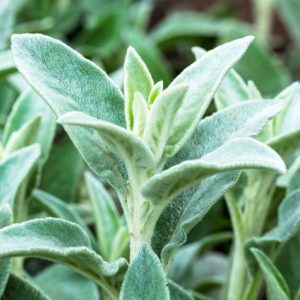


Eleni
For in-ground planted mums do we cut off flowers before or after hard frost? Or do we just leave them?
Mary Ward
Don't cut the dead stems back for any of them. This is especially important for mums in the ground because it gives added protection to the crown:
"When the mums die back after a frost and freeze, do not trim the dead plant parts. Leave them there to help protect the crown for the winter. You can cut it back in the spring after a thaw."
Wait until spring to give it a trim. I would wait until you see new growth--that way you'll always know where the plant is.